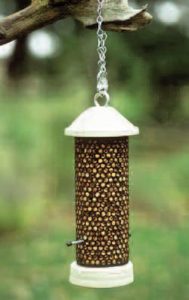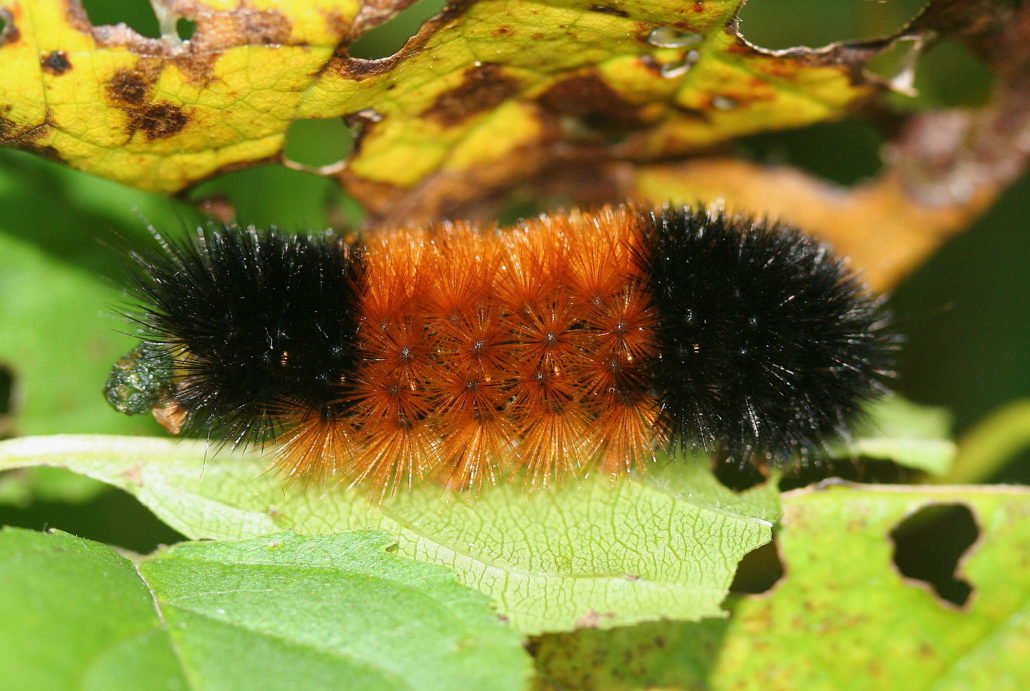SCORES & OUTDOORS: Where have all the birds gone?
 SCORES & OUTDOORS
SCORES & OUTDOORS
by Roland D. Hallee
Where have all the birds gone? That is a question that has been asked of me many times over the last several weeks. My wife first brought it to my attention when we first moved back to town from camp in early October. So, like a good husband, I ignored it. I said that I had seen birds at the feeders. Then, someone called a couple of weeks ago, and asked the same question. Many friends have also brought the situation to my attention.
 So, thinking back, I realized the birds I had seen at home did not amount to the same number that have frequented our feeders in the past. Namely, one nuthatch, one chickadee and one house finch. The feeders are usually covered with gold finches, woodpeckers along with many other species. So, where did they go?
So, thinking back, I realized the birds I had seen at home did not amount to the same number that have frequented our feeders in the past. Namely, one nuthatch, one chickadee and one house finch. The feeders are usually covered with gold finches, woodpeckers along with many other species. So, where did they go?
Even at camp, we noticed a shortage of birds this season. We did not see any grosbeaks, orioles or cardinals. And the hummingbirds left two weeks earlier than usual. So, where did the bird go?
Research showed me there is no definite answer. One of the reasons could be the loss of insects. Birds are highly dependent on them. When was the last time you had to clean your windshield of insects in the summer as we once did? Even at camp this summer, we noticed a shortage of insects. I haven’t seen a June bug in two years. There were hardly any hickory tussock caterpillars this fall, and definitely a decline in the number of harvestman spiders.
The loss of bird populations in the Western Mountains of Maine includes three major causes. First, there has been a coincidental drop in insect life. No one completely understands how or why this has happened. Another reason is loss of habitat.
Has anyone seen a wooly bear caterpillar this fall? They usually begin to appear in mid-September. I have seen zero, nil, zilch this fall.
Birds are the warning lights that tell us our natural systems are stressed out. Seen as indicator species for the health of America’s natural landscape, they are declining in numbers at an alarming rate.
I think it was in July when we first noticed there weren’t as many birds around as usual. We kept the feeders filled, but the time lapse between fill-ups was getting longer.
Was the summer too cold for baby birds to survive? Also, organized spraying campaigns can kill birds as well as the massive caterpillar population. Or, did the birds just go somewhere else. I guess we shouldn’t take it personally because birds do move from place to place in search of food. Birds migrate, so did they leave to head south a little earlier than normal. Did the violent hurricane activity this year have an affect on the bird migration? Did the storms mess up the birds’ timing and navigation? I guess the questions are endless on the possibilities.
The best reason I was able to find was from the Audubon Society, along with other bird information sources, insisting that nothing is wrong. That because of the warmer than usual fall weather and the unusually abundant sources of natural food, the birds are still finding plenty to eat in the wild. Also, another explanation was that bird populations naturally fluctuate from year to year and that a feeder that is really “busy” one year may have fewer birds the next.
It is apparently a universal question in our area right now, and one that seems to have fewer answers.
Read the follow-up, Update on Birds
Responsible journalism is hard work!
It is also expensive!
If you enjoy reading The Town Line and the good news we bring you each week, would you consider a donation to help us continue the work we’re doing?
The Town Line is a 501(c)(3) nonprofit private foundation, and all donations are tax deductible under the Internal Revenue Service code.
To help, please visit our online donation page or mail a check payable to The Town Line, PO Box 89, South China, ME 04358. Your contribution is appreciated!



Hi… It appears the loss of birds is quite widespread…not just in Maine. I live in upstate NY… Catskill Mtn. region; and we haven’t had any birds, at all, for over a month. We went for about a 45 minute drive to admire the autumn foliage, and we did not see even one bird spotted flying during the drive… and we were specifically watching to see if another area had birds. My relatives and I feed them year round… and usually have to refill the feeders on a daily basis. There have always been lots of birds year round… this has not happened before in over the 25 years I have lived here. On a positive note, we noticed this weekend a few birds have started to return from wherever they had gone! It is so nice to hear and see them again!
I have had a feeder in Waterville, Maine for many years. The first few days in September the hummingbird sat at the nectar feeder almost all day and evidently left that night on his southern journey. Until about that date my seed feeder had many daily bird visits from tufted titmice, several male and female cardinals, many chickadees, gold finches and house finches, and others. But right about that time in early to mid-September I realized my feeder was staying full and there were no birds, only an occasional squirrel. I cleaned the feeder and bought new seeds, but still no luck. I kept a look out for predators and did see a cat several times. But, that is not unusual. I have seen an occasional titmouse and cardinal but that is it. I have seen some birds in the trees, but not as many as I have seen in the past. I hope they will come back as the birds are a bright spot by my kitchen window during the long winter.
I was just googling “where are the birds” and this article was high in the search. I live in Southport, North Carolina. Usually my feeders are covered with many types of birds, especially House finches. But for the last month or two, I have a couple of chickadees, cardinals and nuthatches. This area is rich in bird life, especially water birds (egrets, herons, etc) and those birds seem to be about the same. But I am very shocked at the decrease in feeder birds. We have a lot of insects here. I have noticed no decrease in them. I am very concerned to find an article from Maine that describes a similar situation.
My neighbors and I also noticed a very sudden decline in feeder birds since mid September in the Catskills as well. It is so sad to not have the birds about though there are geese and crows so hopefully the others will be back.
Over the last two years we have noticed the decine of spiders on our property in midcoast ME. The mosquito decline possibly due to second year of drought. Wild bees, and our bats all seem stressed and in decline. I have kept daily journals for 25 years making daily notes of weather and wildlife. The odd absence of birds is “different” this year, for us as well, and another alert to change in our environment worth keeping track of.
We are in central NH and have always fed birds with multiple feeders and a varied diet of sunflower seeds, hearts, nuts and suet. We have cleaned out our feeders monthly & replenished the food and STILL NO BIRDS in sight. We normally have to refill our feeders twice a week. Since Sept 2017 our woods and feeders are silent. No birds, zero, zilch, nada………. scary quiet. I hope they return, I sure miss them.
I speculate that the malathion aerial spraying for zika vectors has done damage to large insect populations.
Wow! This article came up.on my Facebook feed tonight. Some friends and I were just talking about how we have no song birds this fall. I said I thought they had been driven away by massive crow populations, just as you observed, too.They are all I see. I am sad to know this is happening all over. I hope the Audubon Society is right that it’s just a normal migration shift, but I am missing the birds very much.
I live in Southern Vermont and put out my bird feeder a little earlier than I should have (we normally wait until snow is covering the ground because of the bear). I’ve seen a lot of the usual suspects: goldfinch, junco, blue jays, titmouse, purple finch, doves. But I find it odd we have few chickadees, which are usually the dominant bird at the feeder. There’s a big, grey squirrel hanging around, which I don’t often see, as we usually have red squirrels. Hope the feeder activity has picked up for everyone.
I live in Colorado and the birds have pretty much disappeared in my neighborhood. I used to have birds all day long at my feeders. The little Junco was always the first to come visiting when they knew cold weather and/or snow was coming. I haven’t seen a Junco in three years. This year if I see one bird a day I’m lucky. I’ve tried to find out what’s going on but the extension office doesn’t seem to know when I inquired. The squirrel population is down also. The bunnies used to be quite prolific and my grandkids would count them each time they were over here. This year the most I’ve seen are three at a time. We used to have coyotes – one of which would come down the sidewalk sometimes very slowly and cautiously. We had foxes and they would come in the neighborhood occasionally. Now that’s all gone too! Any ideas from anyone out this way would be appreciated.
I live in the Ozark Mountain National Forest in NW Arkansas and have noticed that there have been very few birds this year. Also, I haven’t seen migrating flocks of ducks or geese as I have in the past years. Additionally, I haven’t heard the chorus of frogs at the pond. This is a very strange year indeed.
I’ve noticed a decline in my song bird population in eastern Pa. My area hasn’t had any chemical spraying, etc. But what I did notice was a local population of either a Coopers Hawk or a Sharp-Skinned hawk pair that took up residence in my back yard. They prey on small birds!!!! The disappearing small birds went into the hawks stomachs. Mystery solved!